What Are Tacos de Lengua?
Tacos de lengua are soft corn tortillas filled with slow-cooked beef tongue, typically garnished with onions, cilantro, and a variety of salsas. This taco variety stands out for its smooth, tender texture and rich, meaty flavor. Though it might seem unconventional to some, lengua is a cherished delicacy in Mexico and across Latin American cuisine.
The tongue is cooked slowly until it becomes melt-in-your-mouth tender. It’s then peeled, sliced or diced, and briefly sautéed to enhance its natural richness. Served hot and fresh, it’s one of the most delicious and underrated taco fillings around.
The Cultural Roots of Beef Tongue Tacos
Lengua has long been part of Mexican culinary tradition. In many rural communities, no part of the cow is wasted — including the tongue. Tacos de lengua were born from this principle of resourceful cooking.
Historically, it was seen as a food for special gatherings or large family meals, often slow-cooked over an open flame or clay oven for hours. Today, it’s both street food and a delicacy served in fine dining.
Nutritional Benefits of Beef Tongue
While beef tongue is often overlooked, it’s surprisingly nutritious. It’s rich in:
- Protein (for muscle repair and growth)
- Vitamin B12 (essential for brain and nerve health)
- Zinc and Iron (boost immunity and energy)
- Healthy fats (support metabolic function)
That said, it’s relatively high in cholesterol and saturated fat, so enjoy it as part of a balanced diet.
Where to Buy Beef Tongue
Finding quality beef tongue is the first step in creating perfect tacos de lengua. Look for:
- Latin grocery stores or carnicerías
- Butcher shops with whole-animal cuts
- Online meat markets offering specialty cuts
Choose tongues that are firm, pinkish-gray in color, and without a strong odor. Fresh is ideal, but frozen can work just as well when thawed properly.
Prepping Beef Tongue: Cleaning & Soaking
Before cooking, rinse the tongue thoroughly under cold water. Some cooks also soak it in vinegar or lemon water for 30 minutes to eliminate any lingering odor.
Next, trim any visible fat or glands. You’ll be boiling it with seasonings, so prepping it well ensures great flavor from the start.
 How to Cook Beef Tongue (3 Easy Methods)
How to Cook Beef Tongue (3 Easy Methods)
There are several tried-and-true ways to cook beef tongue:
1. Traditional Stovetop Simmering
Place the tongue in a large pot with:
- Onion
- Garlic
- Bay leaves
- Salt and pepper
- Optional: cloves or vinegar
Simmer gently for 3 hours or until the tongue is tender and the skin starts to peel.
2. Slow Cooker Method
Put all ingredients into a slow cooker and cook on low for 8-10 hours. This method is nearly foolproof and yields ultra-soft meat.
3. Pressure Cooker / Instant Pot
If you’re short on time, use a pressure cooker. Cook on high pressure for about 60-70 minutes, then allow a natural release.
 Peeling and Slicing the Cooked Tongue
Peeling and Slicing the Cooked Tongue
Once the tongue is fully cooked and cooled slightly, the outer skin should be soft and easy to peel. Use your fingers or a paring knife to remove the thick, white layer. Discard the skin completely — it’s tough and not meant to be eaten.
After peeling, slice the meat into thin strips or dice it into small cubes, depending on your texture preference. For tacos, thinner cuts are often preferred as they blend better with tortillas and toppings.
How to Season the Tongue (Mexican-Style)
While the tongue is flavorful from the initial cooking process, finishing it off in a pan with added seasonings brings the flavor to life. Heat a bit of oil in a skillet and add:
- Diced onions
- Garlic
- A splash of broth
- Ground cumin
- Smoked paprika or chili powder
- Fresh lime juice
Sauté until the edges are slightly crispy and the seasoning is absorbed. This step adds a new layer of texture and flavor, transforming it from simply tender meat to a crave-worthy taco filling.
 Assembling the Perfect Taco de Lengua
Assembling the Perfect Taco de Lengua
Now comes the fun part — taco assembly. Warm your corn tortillas on a dry skillet until soft and slightly charred. Then, build your taco in this order:
- A generous spoonful of sautéed lengua
- Chopped onions and fresh cilantro
- Squeeze of lime
- Optional: salsa verde, salsa roja, or avocado crema
You can also add radishes, pickled jalapeños, or queso fresco if you like. But remember, simplicity is key — let the lengua shine.
 Delicious Sides & Drinks to Serve With
Delicious Sides & Drinks to Serve With
To round out your taco meal, pair it with:
- Mexican rice or cilantro-lime rice
- Refried beans or black beans
- Grilled elote (Mexican corn on the cob)
- Pico de gallo or fresh guacamole
For drinks:
- Agua de jamaica (hibiscus tea)
- Horchata
- Fresh lime margaritas
These additions complement the tacos perfectly and help balance the richness of the beef tongue.
Regional Variations of Tacos de Lengua
Tacos de lengua are enjoyed throughout Mexico and Latin America, but regional twists bring unique flair:
- Mexico City : Tongue is slow-cooked and served simply with onion, cilantro, and salsa verde. Vendors often specialize in offal tacos.
- Northern Mexico (Sonora, Chihuahua) : After boiling, the tongue is grilled for a smoky finish. Some areas use flour tortillas.
- Oaxaca & Veracruz : You’ll find lengua paired with mole, peanut salsa, or pickled toppings.
- United States : Especially in states like California and Texas, lengua appears in fusion tacos — with toppings like kimchi, chipotle mayo, or cotija cheese.
These variations show how beef tongue adapts beautifully to local ingredients and taste preferences.
Common Mistakes to Avoid When Making Tacos de Lengua
Many home cooks make these avoidable errors:
- Not simmering long enough: Under-cooked tongue is tough and rubbery.
- Skipping the peel: The outer layer is inedible — always remove it.
- Over-seasoning: Let the natural flavor of lengua shine through.
- Using cold tortillas: Always warm your tortillas for better texture and flexibility.
- Crowding the taco: Too many toppings mask the star ingredient.
Avoid these and you’re guaranteed a more authentic, enjoyable experience.
How to Store & Reheat Beef Tongue
Store any leftover cooked tongue in an airtight container in the refrigerator for up to 4 days. For longer storage, freeze sliced portions in resealable freezer bags. It keeps well for up to 3 months.
To reheat:
- Skillet method: Add a splash of broth or oil and heat gently.
- Microwave method: Cover and heat in short bursts to avoid drying out.
Avoid overcooking on reheat to preserve the meat’s tenderness.
Advanced Flavor Techniques for Lengua
For the experienced cook or the bold flavor chaser, there are a few advanced techniques that can make your tacos de lengua stand out even more:
1. Braising After Simmering
After boiling and peeling the tongue, braise it in a flavorful sauce. Consider:
- Adobo sauce with chipotle
- Tomatillo salsa with garlic and onion
- Beer and citrus marinade
Let the meat simmer in these sauces for 20-30 minutes. The result? A juicy, spicy, flavor-packed taco filling that feels gourmet.
2. Wood-Smoking or Grilling
If you have access to a smoker or grill, lightly char the peeled lengua over wood chips or charcoal. This adds a smoky complexity that pairs beautifully with fresh salsas.
Modern & Fusion Taco de Lengua Ideas
If you’re a foodie who loves mixing cultures, try these fusion styles:
- Lengua with kimchi and sesame oil (Korean-Mex)
- Topped with tzatziki and pickled onions (Greek-Mex)
- Drizzled with spicy peanut sauce and cilantro (Thai-Mex)
You can also serve lengua tacos on flour tortillas or even lettuce wraps for a low-carb alternative.
Hosting a Taco Night with Lengua
Hosting a taco night? Here’s how to make tacos de lengua the star of the show:
Set up a Taco Bar:
- Base: Corn & flour tortillas
- Proteins: Lengua + 1-2 other options (chicken tinga, carne asada)
- Toppings: Onions, cilantro, radishes, salsa, avocado, crema, lime wedges
Add Ambiance:
- Play mariachi or Latin jazz
- Serve aguas frescas or Mexican sodas
- Decorate with colorful tablecloths and chili pepper string lights
Sustainable Nose-to-Tail Cooking
Cooking with beef tongue supports sustainable meat consumption. Instead of discarding less conventional cuts, using lengua helps honor the whole animal — a concept deeply embedded in Mexican cooking philosophy.
This also ties into budget-friendly cooking: tongue is often more affordable than premium cuts but delivers equally impressive results when handled with care.
FAQs About Tacos de Lengua
Is beef tongue taco good?
Yes! Tacos de lengua are incredibly flavorful and tender. They’re a top choice among Mexican taco varieties and beloved for their rich, beefy taste.
What is a beef tongue taco called?
It’s called a taco de lengua in Spanish. “Lengua” means tongue.
Is barbacoa a tongue?
No, barbacoa is usually made from beef cheek, lamb, or goat. Tongue is a different, specific cut.
Is beef tongue good meat?
Absolutely. It’s nutrient-rich, flavorful, and tender when cooked correctly — a prized ingredient in many world cuisines.
Conclusion: Why Tacos de Lengua Deserve a Place at Your Table
Most people don’t think of tacos de lengua when planning taco night, but that changes after just one bite. Their melt-in-your-mouth texture and deep, beefy flavor instantly win over those willing to give them a try. These tacos deliver a satisfying, unique twist on tradition and highlight the richness of authentic Mexican cuisine.
Stick with a classic street-style combo of onions and cilantro, or get creative with fusion toppings and bold salsas. However you serve them, lengua shines as a versatile, flavor-packed choice. It also supports sustainable eating by using every part of the animal — a thoughtful and delicious approach to cooking.
Now that you’ve learned how to prep, cook, and serve beef tongue tacos from start to finish, it’s your turn to bring this tradition into your kitchen. Give them a shot, and you might just discover your new go-to taco.
More Delicious Recipes
- Sausage Balls with Cream Cheese: Best Recipe + Tips for Perfect Results
Cheesy Double Beef Burrito: The Ultimate Guide to Taco Bell’s Iconic Favorite!

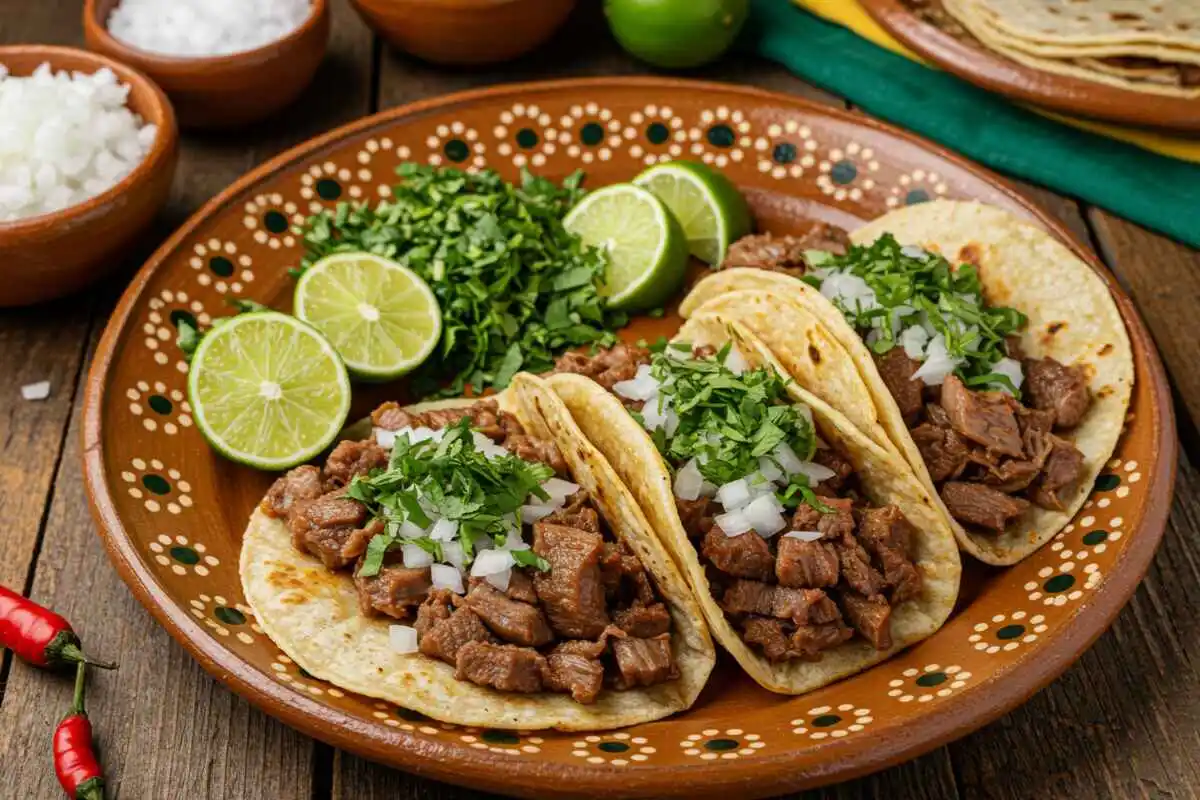
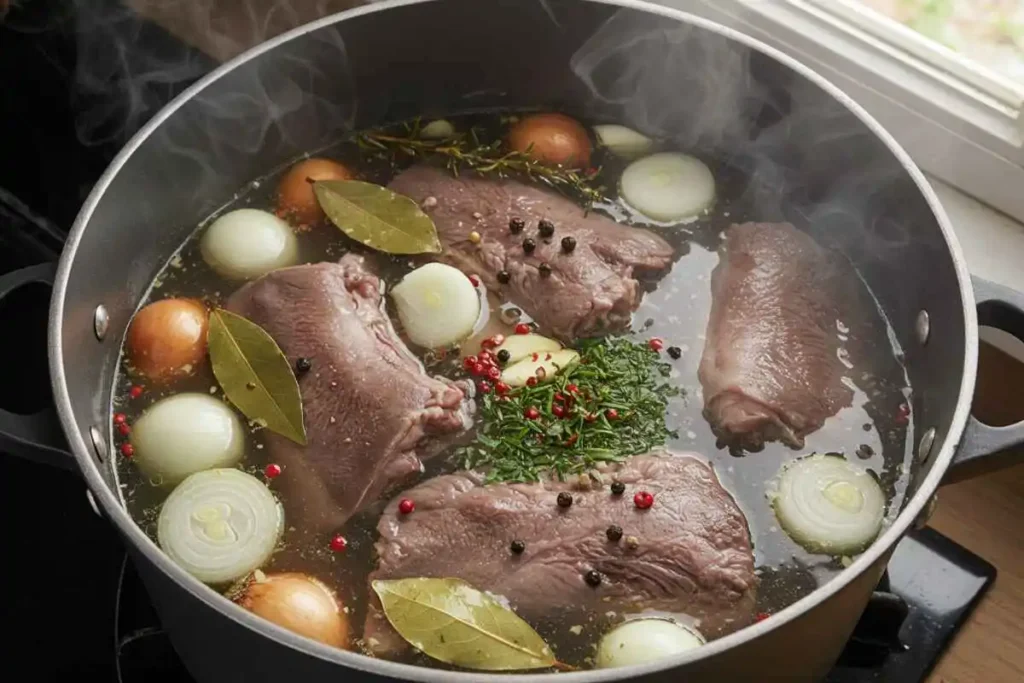 How to Cook Beef Tongue (3 Easy Methods)
How to Cook Beef Tongue (3 Easy Methods)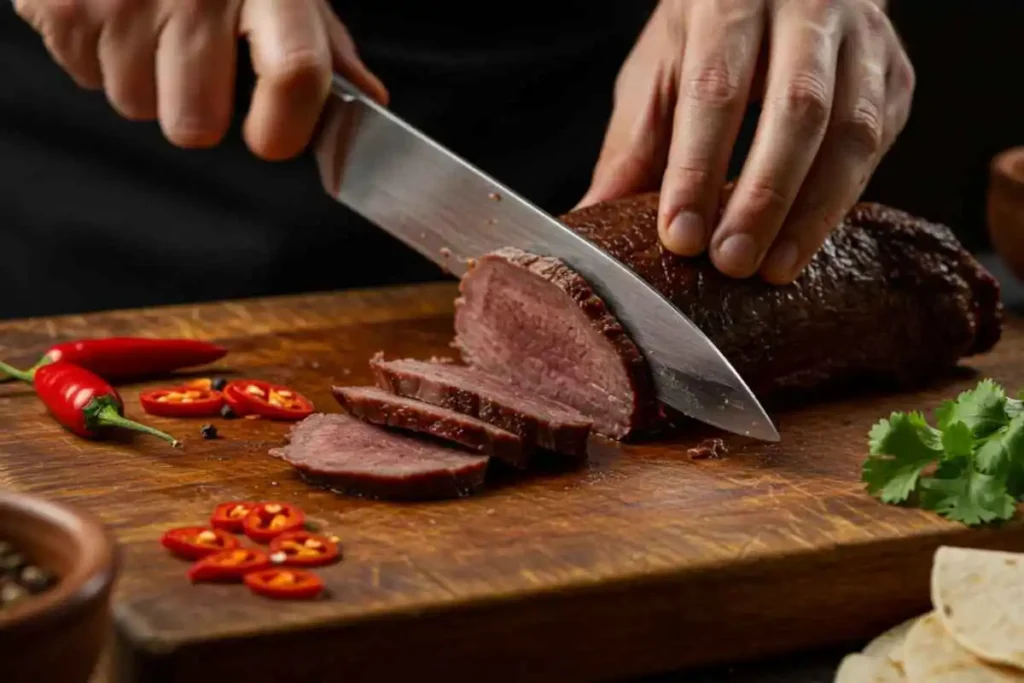 Peeling and Slicing the Cooked Tongue
Peeling and Slicing the Cooked Tongue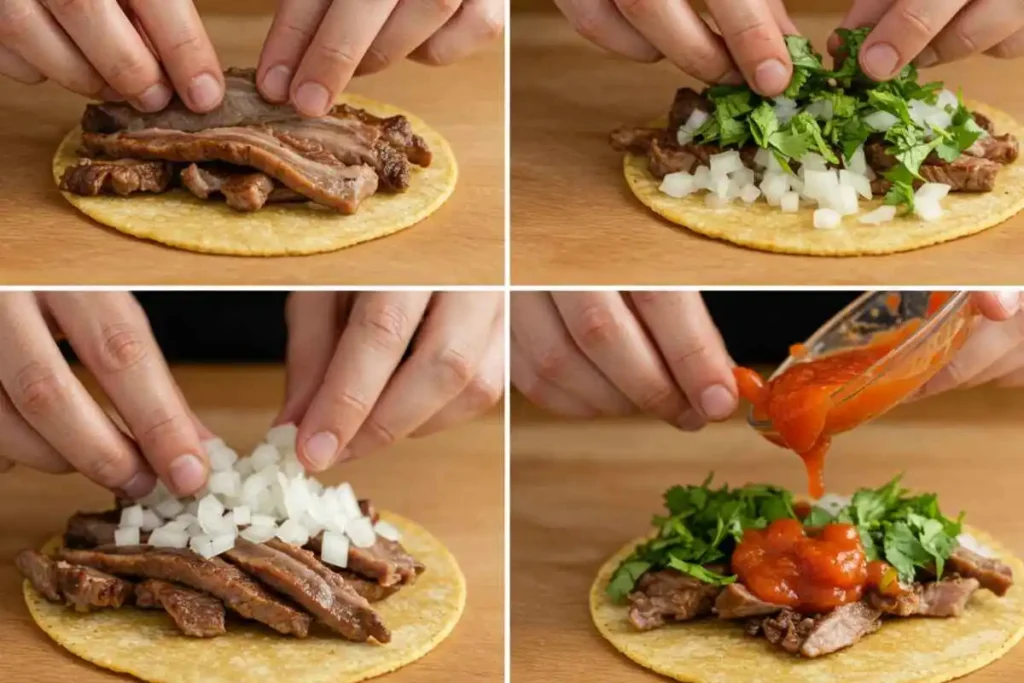 Assembling the Perfect Taco de Lengua
Assembling the Perfect Taco de Lengua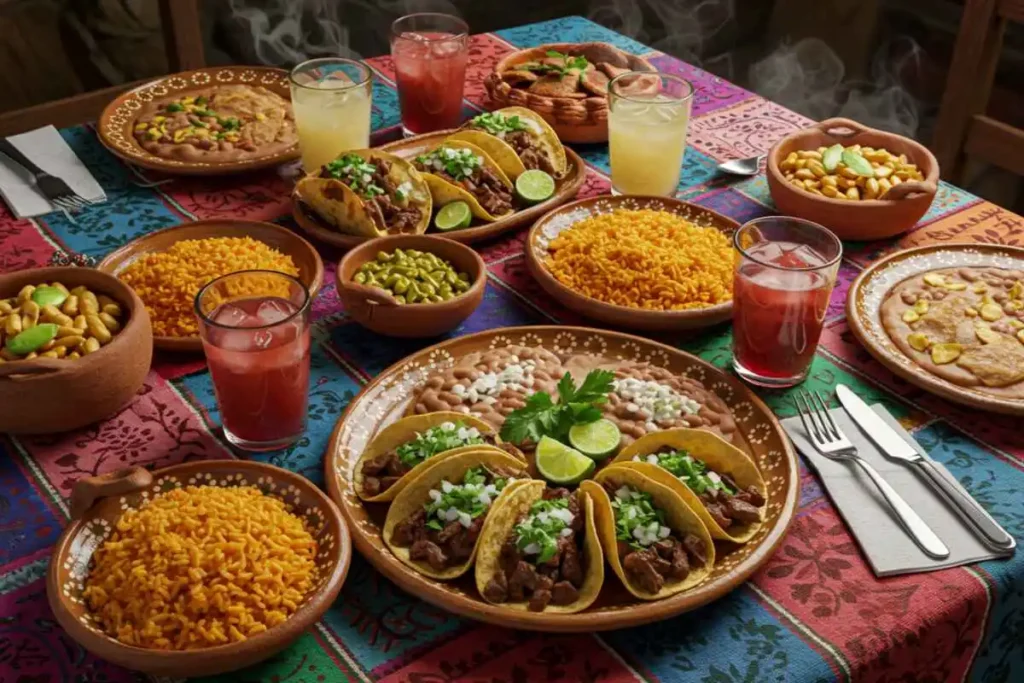 Delicious Sides & Drinks to Serve With
Delicious Sides & Drinks to Serve With